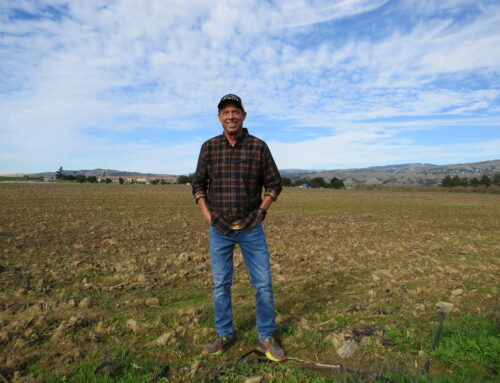January to March will be wet, National Weather Service says
Published in the December 9 – 22, 2015 issue of Morgan Hill Life
By Staff Report
Batten down the hatches. The National Weather Service forecasts that starting next month El Niño storms will be some of the most powerful in recorded history.
To get ready for the deluge, which will help alleviate but not end the current drought, the Santa Clara Valley Water District is preparing the creeks and streams for the on-surge of potential flood waters.
In November, ocean surface temperatures in the Pacific Ocean reached three degrees Celsius above average for the first time in recorded history. This exceeds the maximum weekly value recorded even during what scientists called the “super El Niño” events of 1982-1983 and 1997-1998.
In a word, this winter from January to March will be wet, according to the NWS’s latest dynamic model forecasts. These models suggest a large-scale atmospheric pressure pattern that is strikingly similar to the ones that occurred during California’s wettest historical winters.
Heavy rains during the winter months don’t always mean major flooding if there are substantial breaks between the storms. But the high seasonal totals mean heavy precipitation is more likely to coincide with already wet/saturated soil conditions, and the storm frequency that comes with El Niño make it more likely for several intense storm events to take place in quick succession.
Thus, flood and mudslide risk will likely be much greater this winter, and the risk will certainly be higher than has been seen in the past four drought years.
The water district has been preparing for El Niño’s impact on the South Valley, said Marty Grimes, supervising program administrator for the district’s communication unit.
“Through our annual Stream Maintenance Program, we have performed sediment removal, vegetation management and erosion repairs throughout the county,” he said.
In South County specifically, the district conducted sediment removal on West Little Llagas Creek and Edmundson Creek.
It did stream vegetation removal work in the following streams: Upper Miller Slough, Lower Miller Slough, and Princevalle Storm Drain to maintain stream capacity.
Work on Tennant Creek is scheduled and district workers plan to do a small section on Corralitos Creek. It also did levee repair work along Uvas Creek.
“Watersheds staff have completed 85 work orders in South County,” Grimes said. “The activities included in these work orders were trash and debris removal, fish ladder cleaning, sediment removal, levee repair and bank repair.”
Sand bags are being provided to the public at no charge at the El Toro Fire Station at 18300 Old Monterey Road and open to the public 24 hours a day. The district operates six sandbag sites around the county.
It continually restocks these sites throughout the winter. When demand is very high, the district may deliver sand and empty bags to the site instead of filled bags.
There’s a video on the district’s sandbag web page which shows techniques for filling and using sandbags at www.valleywater.org/sandbags.
There’s a webcam at the El Toro Fire Station sandbag site, so people can check to make sure there are bags available before going there at www.valleywater.org/services/MorganHillSandbagWebcam.aspx.
“We don’t limit how many sandbags people can take — but they should only take what they need,” Grimes said. “Also, they are heavy, so no more than 20 to 30 bags should be loaded in a vehicle.”
As for storm drains and street flooding, city public works departments are typically the ones to call, he said.
“We advise residents to watch the storm drains near their home for leaves and debris, as a blockage could result in significant street flooding,” he said.
To report a blockage in a creek that could cause flooding (such as downed trees or trash buildup), contact the district at 408-265-2650 or use its Access Valley Water app, or click the Access Valley Water link on its home page.




